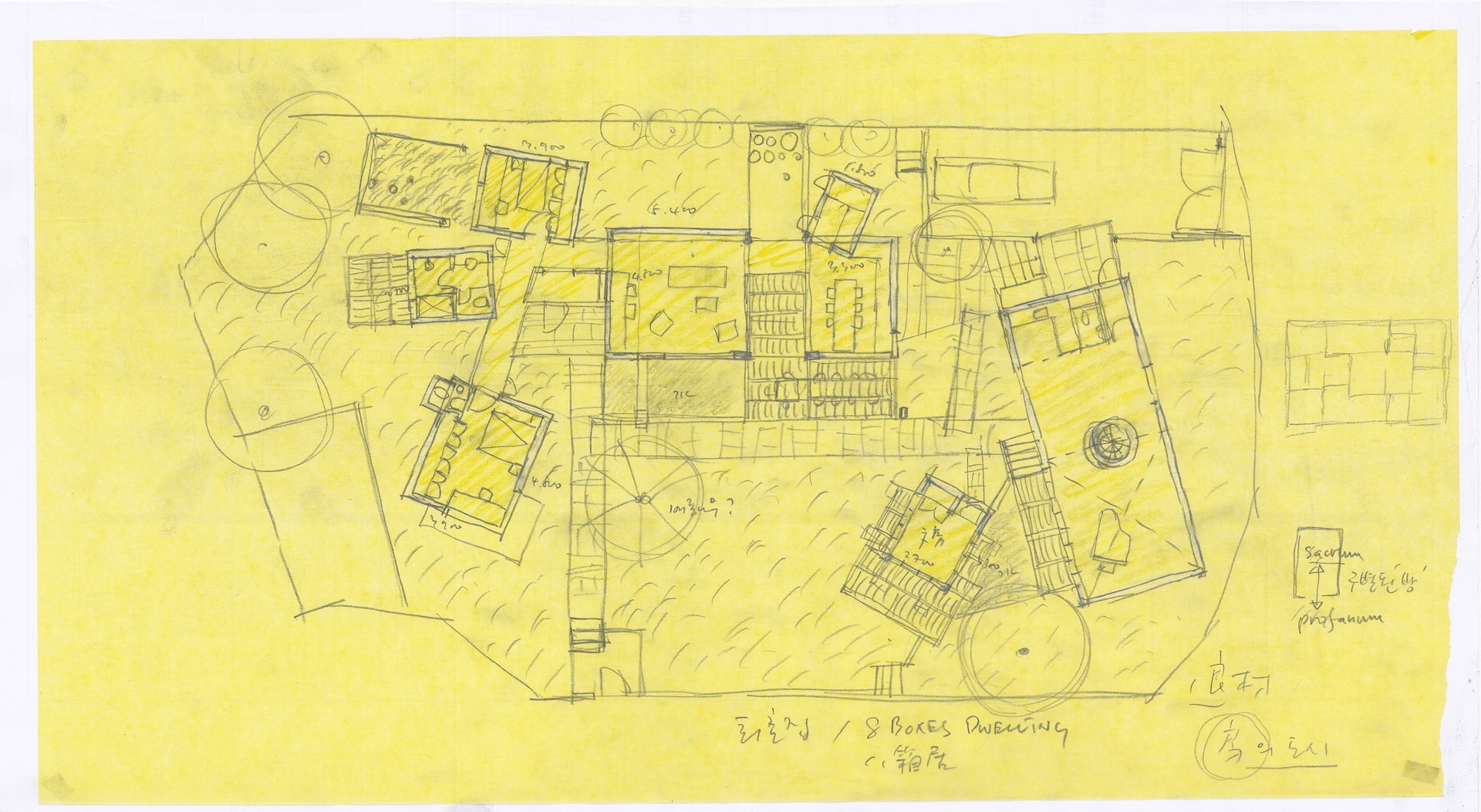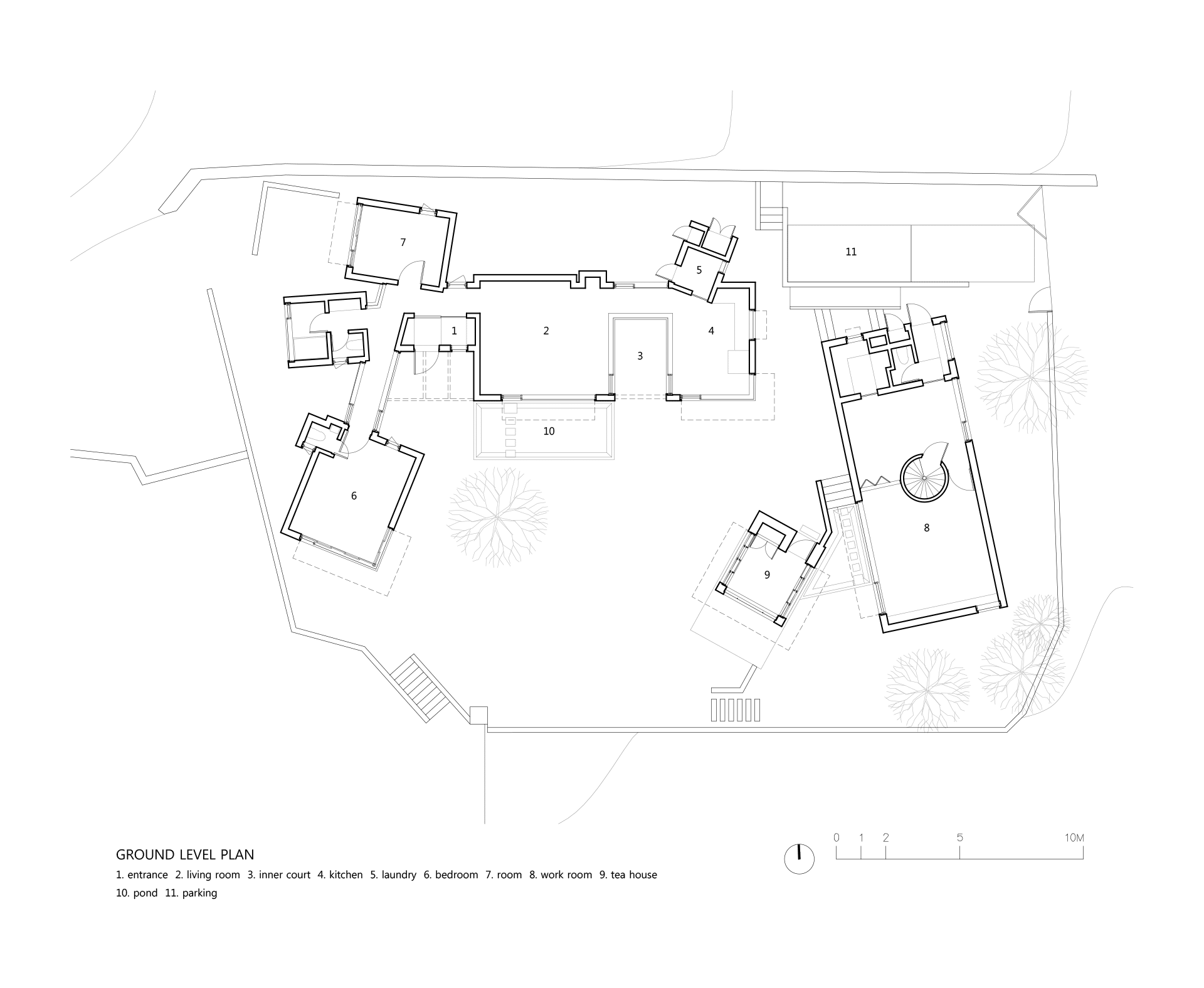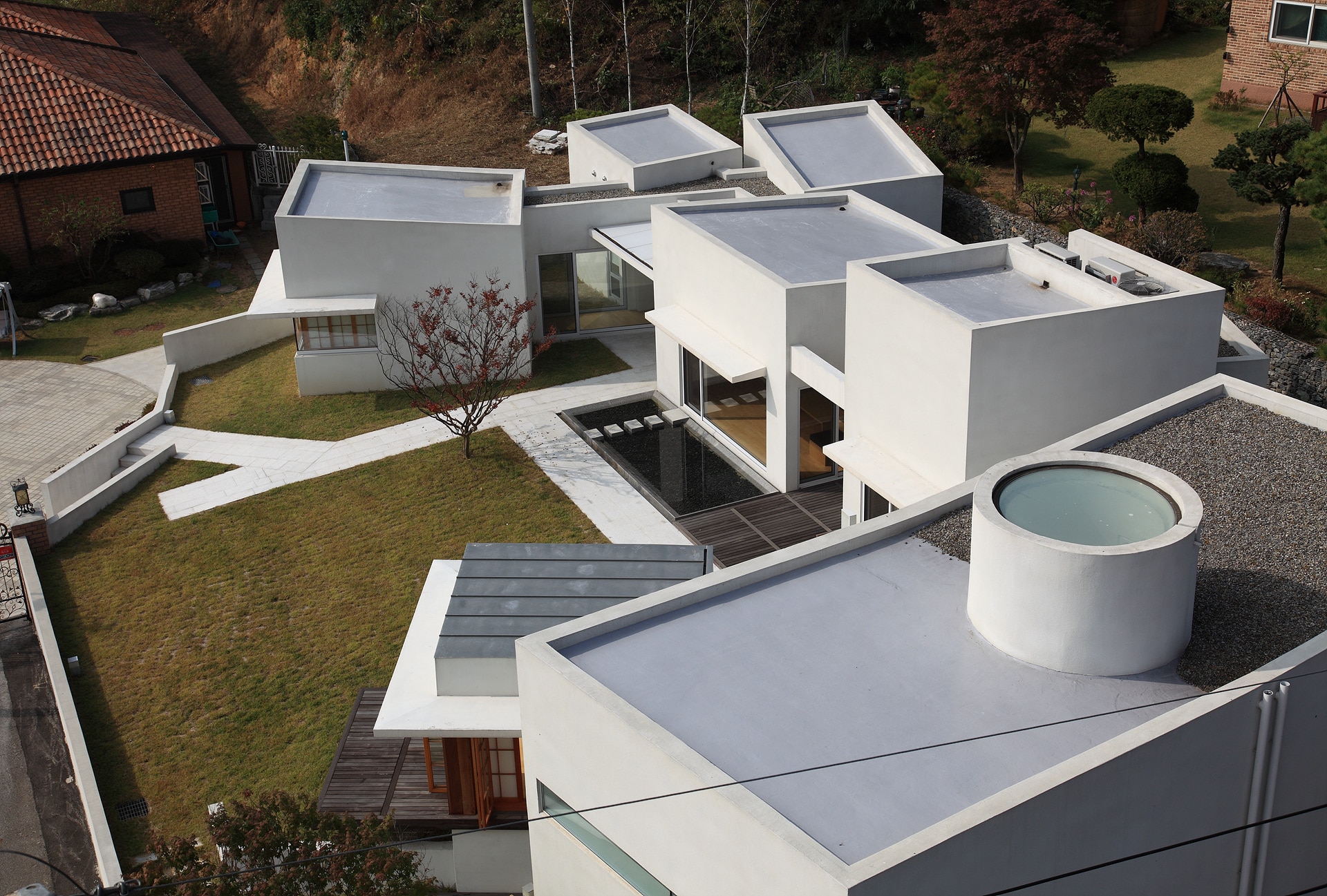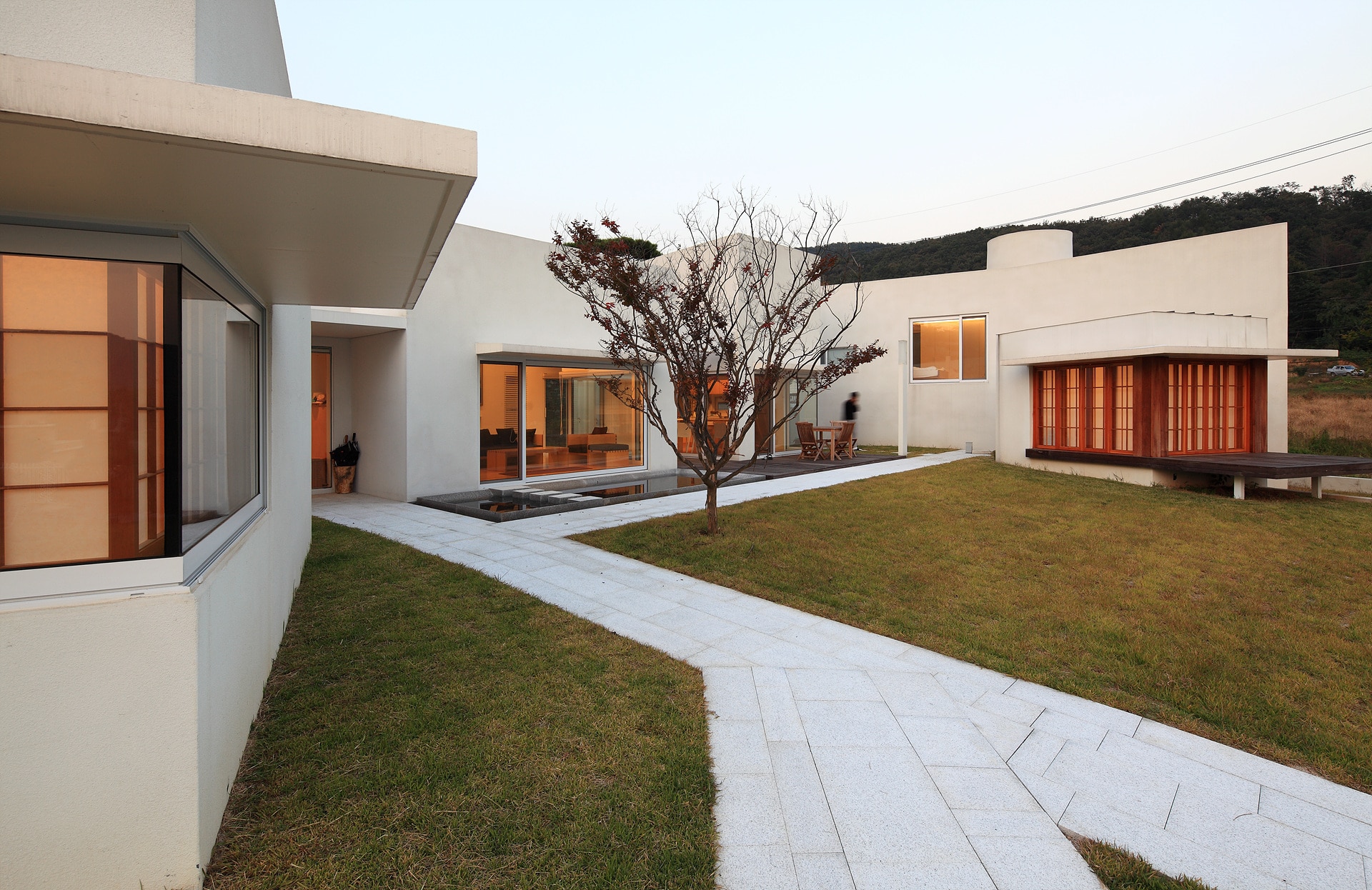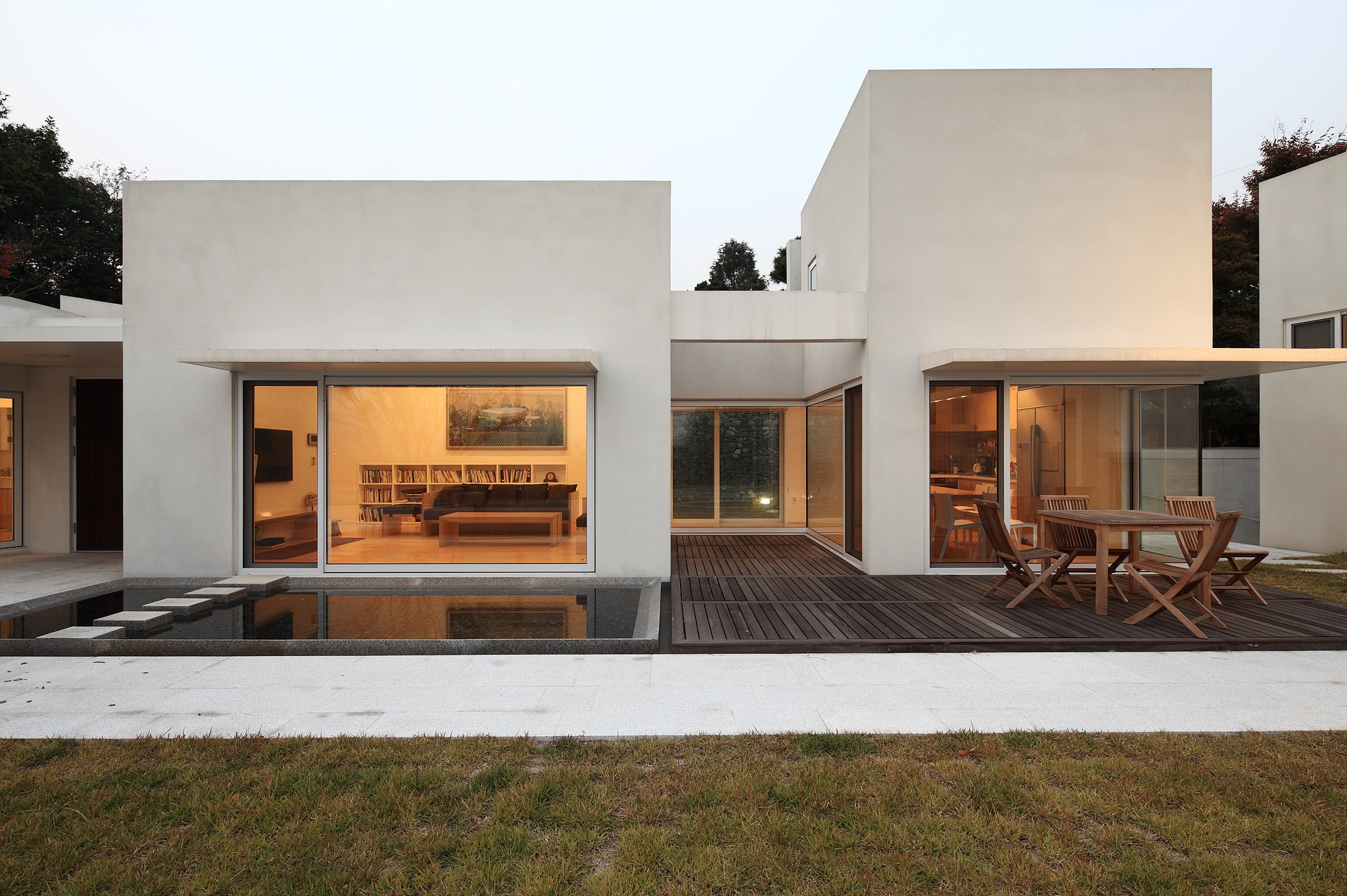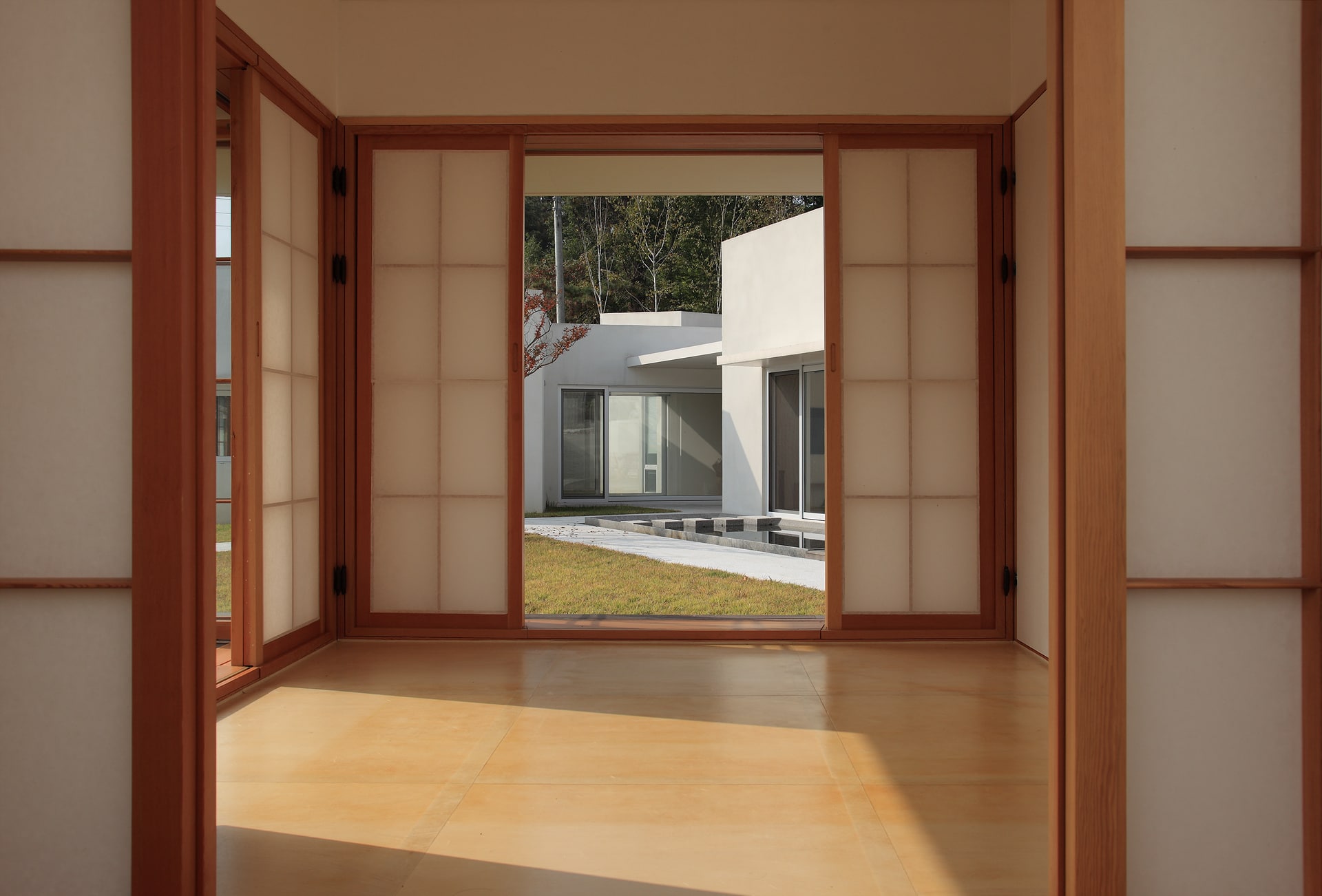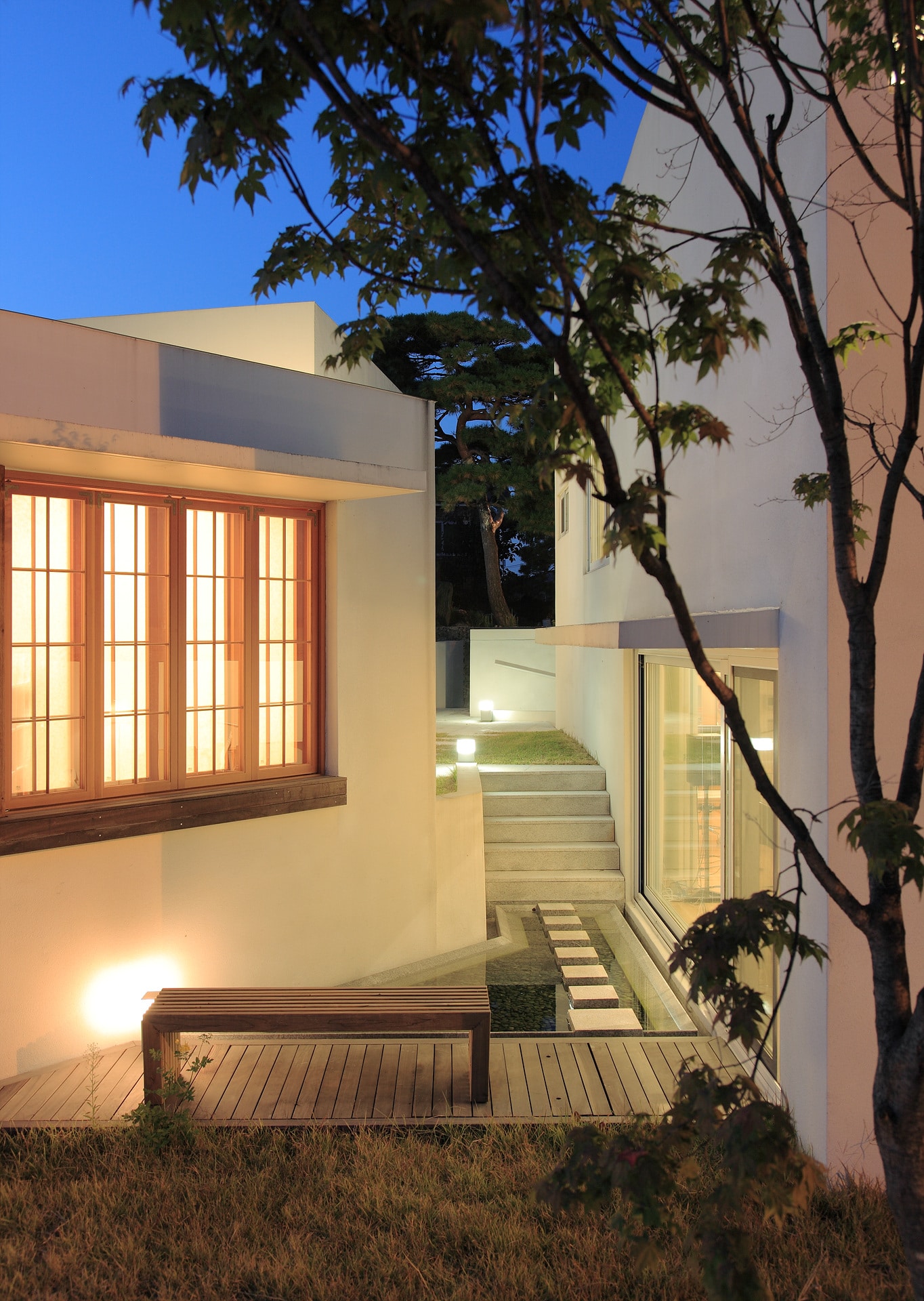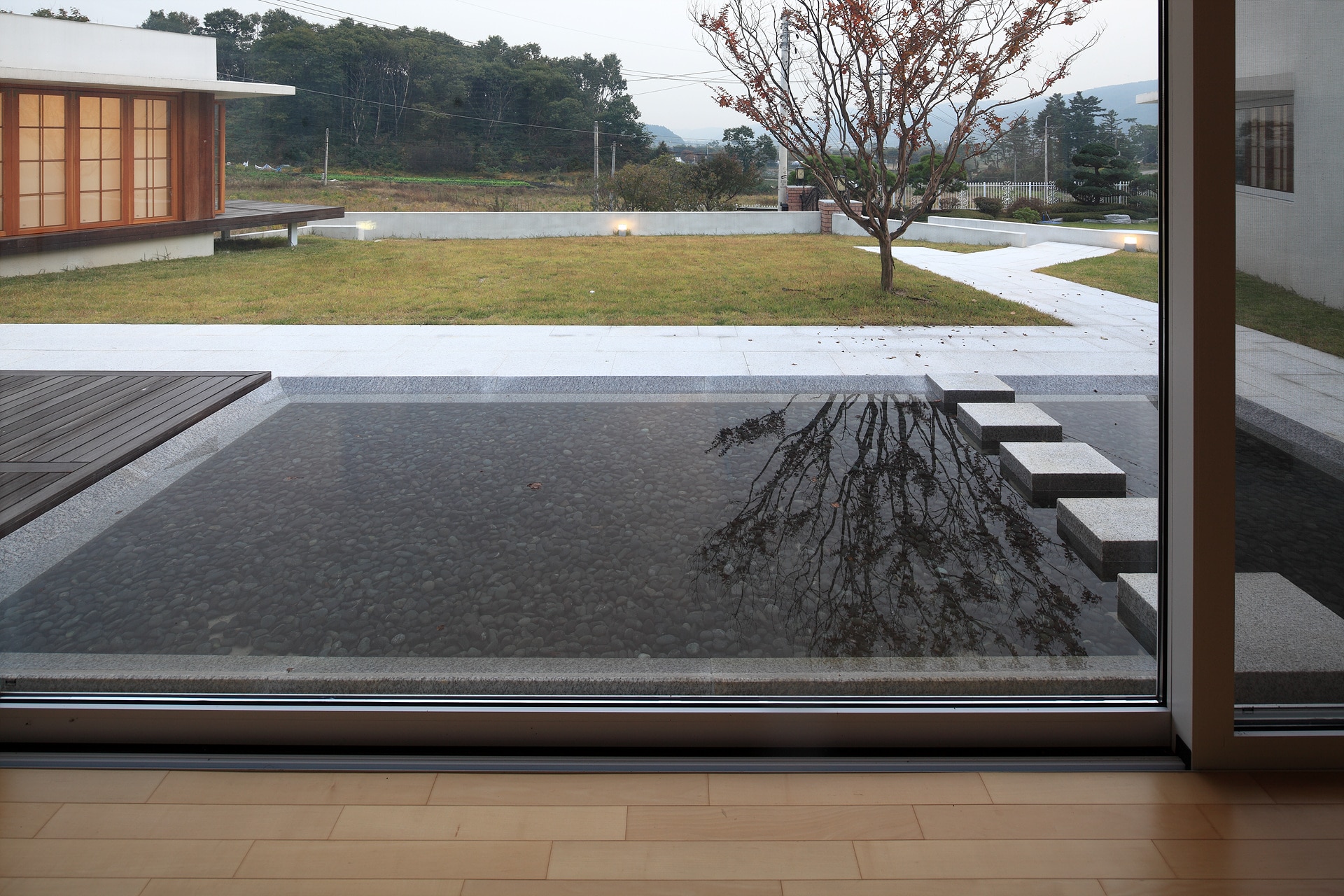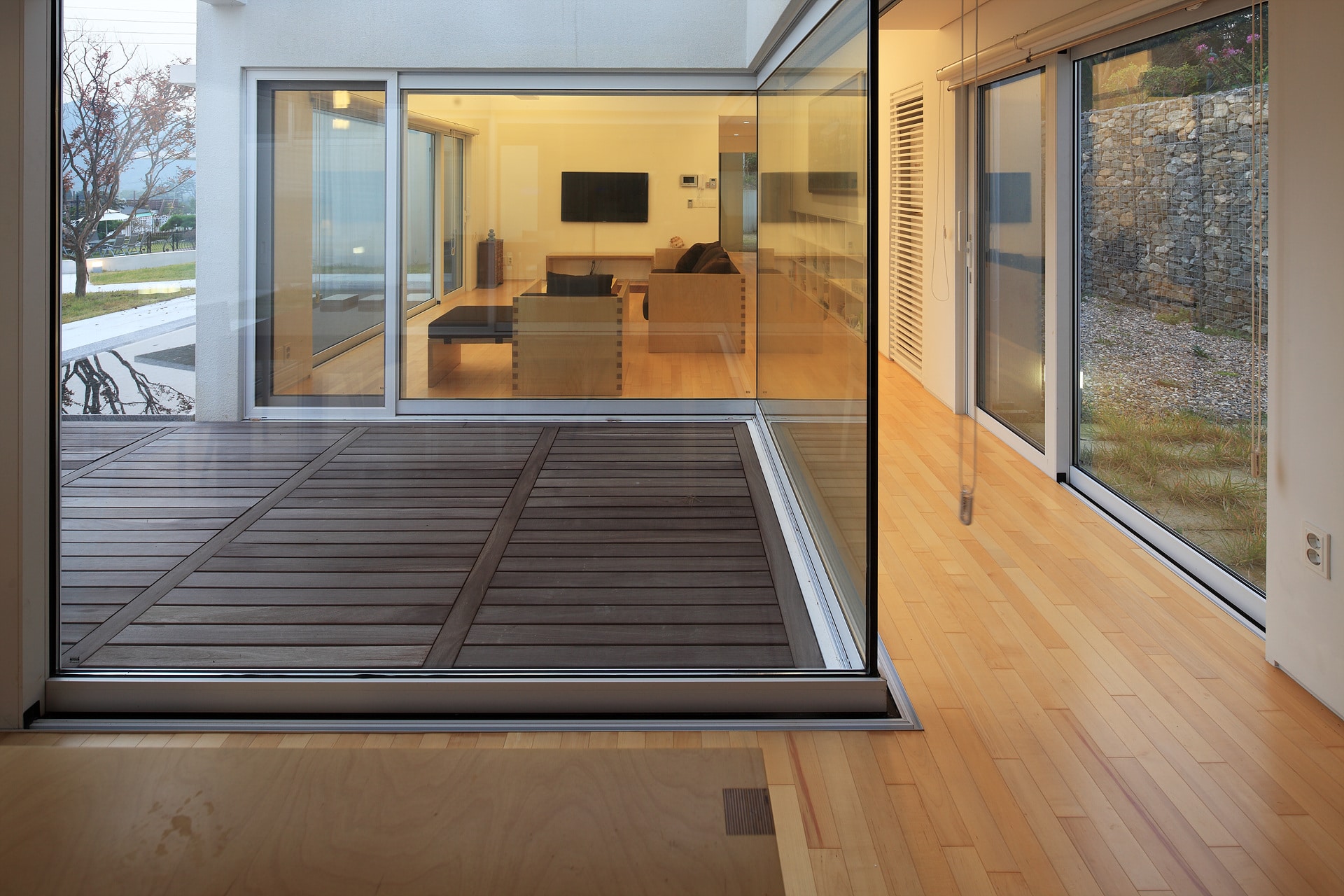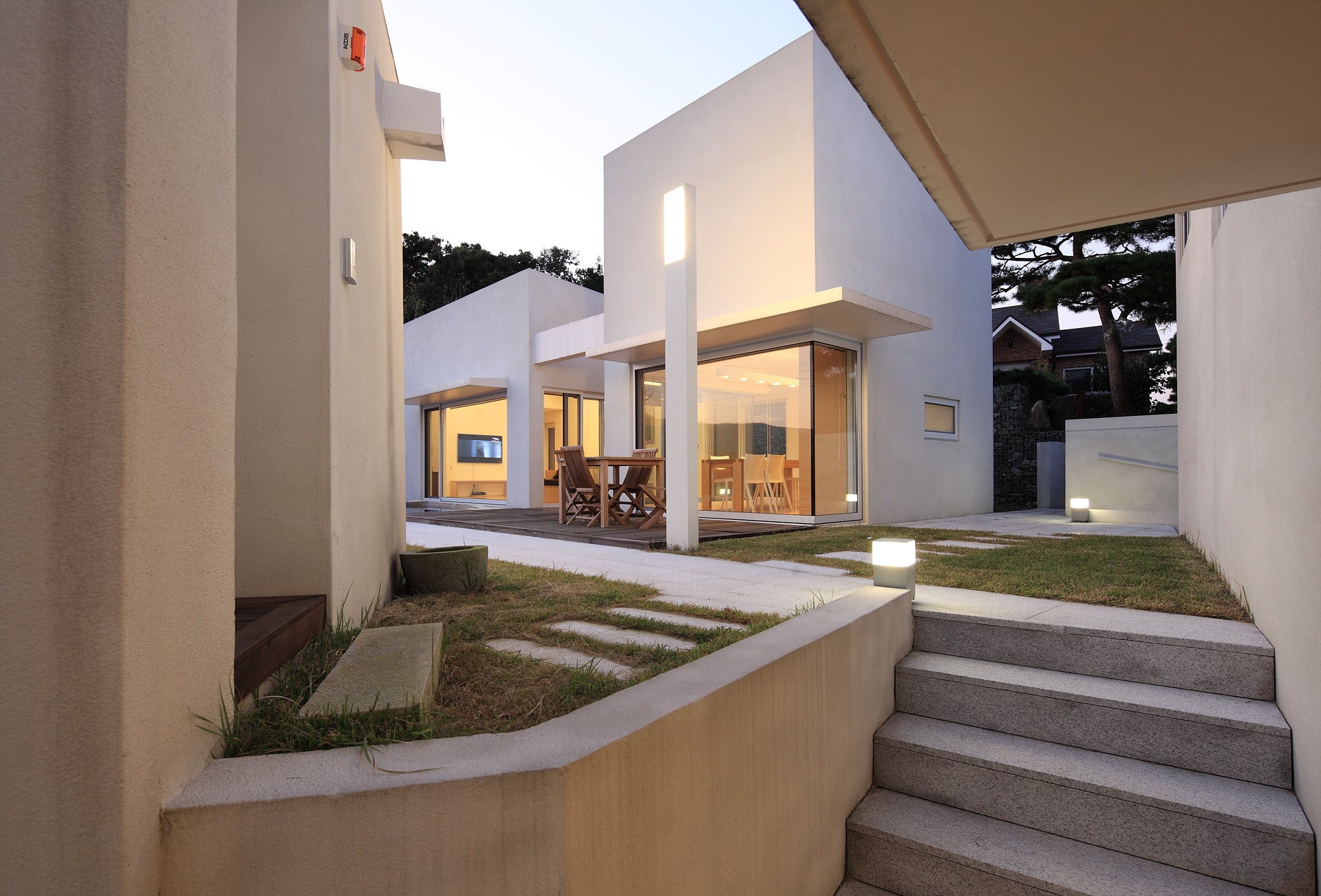Teochon House
| 완공년도 | 2010 |
| 위치 | 경기도 광주 |
| 대지면적 | 817㎡ |
| 건축면적 | 164㎡ |
| 연면적 | 164㎡ |
| Mechanical engineer | 세아엔지니어링 |
| Electrical engineer | 우림 전기 |
| Contractor | 정희건설 |
| Lighting design | 뉴라이트 |
| 완공년도 | 2010 |
| 위치 | 경기도 광주 |
| 대지면적 | 817㎡ |
| 건축면적 | 164㎡ |
| 연면적 | 164㎡ |
| Mechanical engineer | 세아엔지니어링 |
| Electrical engineer | 우림 전기 |
| Contractor | 정희건설 |
| Lighting design | 뉴라이트 |
이 집은 진보적 성향의 교수부부가 어머니가 거처하는 퇴촌의 집 옆에 재즈피아노를 전공하는 아들과 같이 살기 위해 지어졌다. 학문하는 부부인만큼 각자의 독립된 방이 필요할 게고, 재즈피아노라는 소리를 내는 방이 필요하니 이 또한 독립적이어야 한다. 이렇듯 이 가족의 사는 모습은 이 집의 형식을 구성하는 결정적 단서가 될 수 밖에 없었다. 즉 서로 독립된 영역을 가지면서 이를 모아 집이 되는 구조, 그래서 한 일간신문에서 이 집을 취재하고 “뚝뚝 떨어뜨린 집”이라는 제호로 소개도 했다. 또한 이곳의 건축에 대한 법적 조건이 농가주택의 제한을 받아 본채 30평 부속채 20평이어서 기본적으로 두 채의 집을 지어야 하는 것도 “떨어뜨린 집”을 만들어야 되는 조건이었다. 그러나 보다 근본적인 것은 우리가 오랫동안 지녀온 집에 대한 고유의 관념에서 이 집이 만들어졌다. 본디 우리의 전통적인 집들이 방들의 집합으로 이루어진 것이다. 한간 집부터 아흔 아홉간 집이라는 게 방의 집합을 이름하였다. 방들은 서양집의 거실이나 침실 서재 화장실 등의 목적으로 불리는 게 아니라 위치에 따라 안방 건너방 문간방, 심지어 변소도 뒤에 있다고 뒤간으로 불리었으니 목적 없는 방들의 집합이 우리네 집이었다. 이는 모든 방들이 다른 방에 대해 독립하게 할 뿐 아니라, 그 방에서 거주자의 의지에 따라 요를 깔면 침실이요 식탁 놓으면 식당이 되고 서탁을 두면 공부방이며 담요를 펼치면 놀이방이 되는 불특정한 비움의 방이니 현대건축의 새로운 키워드를 우리 선조들은 이미 실체적 삶으로 보여주고 있었다. 이런 형식의 방은 자연과 직접적으로 접속케 하여 통풍과 채광을 자유롭게 하므로 지극히 건강하다. 현대의 밀폐된 공간에서 현대적 설비를 이용하여 인공적 환경의 삶을 사는데 익숙해진 이들에게는, 이 집은 불편한 집일 수 밖에 없다. 그러나 퇴촌이라는 풍광 좋은 터에는 이런 집이 제 격이 아닐 수 없으며 이 불편함에 익숙하면 돌이킬 수 없는 즐거움이 되는 것도 사실이다. ‘불편한 즐거움’, 아마도 우리가 잃어버린 기억 아닐까? 그래서 이 집은 새로 지었지만 기억의 집이며 이 파편적 시대에 우리가 다시 찾아야 할 우리의 오래된 미래일 게다.
This house was for a professor couple with a progressive disposition, who wished to live with his son, a jazz pianist, in a place near the house of the professor’s mother who lived in Toechon. Each of the couple scholars would need an independent room, in addition to another independent room for their son. As such, the way each of the family members lived became a crucial precondition for the design of the house. In other words, separate structures, which are independent of each other, should form a house for the family. Also, because this house is a farm house in accordance with the relevant building law, the applicable provisions stipulate that the main building and the extension building shall not exceed 100m and 65m2 respectively. One of the reasons for making a house of detached rooms was partly due to the legal requirements. The fundamental concept for this house, however, was based on the traditional notion of the house for a home. Our traditional house had long been a collection of several rooms. When our ancestors said a house of one kan(a unit for 3.3m2) and a house of 100 kans, they referred to a total floor area of the rooms of a house. Each of the rooms were called not as a living room, a bedroom, a study, or a bathroom according to the functions used in the western world, but as an inner room, an opposite room, a gate-side room, a back room (for a lavatory, which was in the backyard of the house) according to the location of rooms. Our traditional house was, like this, a set of rooms without specific purposes. What was meant by this was that a room was independent of other room, and each room was versatile. When people spread out the bedding, the room becomes a bedroom; when a table, the room becomes a dining room; when a desk, it became a study; and when people spread out a mattress, it becomes a playroom. In other words, the room was an undefined room in emptiness. Like this, Korean ancestors had already translated one of the new keywords of the contemporary architecture into their practical life. The traditional room with the afore-said characteristics is in direct contact with nature by making ventilation and lighting unrestricted, among others. It is, therefore, extremely healthful to human life. It must be very inconvenient for those who are accustomed to the enclosed living conditions of artificial environment surrounded by modern home appliances. Nonetheless, a house like the traditional one is well suited in Toechon, a beautiful rural area. Once people get accustomed to the inconveniences of living in this house, they will irrevocably become pleasures of life. “Inconvenient pleasures” ― no doubt it is lost memory in Korea. So, this house is one recalled from the memory though it has been newly built, and it seems to belong to our long-cherished future for the contemporary people living in the times of fragmentary memory.


